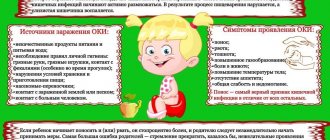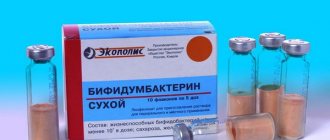Description
Colic is a sharp, cramping pain that occurs in the abdominal cavity.
Colic occurs due to spasm of the muscle fibers of organs located in the abdominal cavity and retroperitoneal space. Depending on the location of the spasm, there is a certain classification. Colic is of the following types:
- intestinal;
- hepatic (bilious);
- renal;
- pancreas (pancreatic).
Colic is not considered as a separate disease, but is a symptom of a disease that has a spasmodic reaction of the body in response to an irritant.
Intestinal colic:
- eating fatty, fried, smoked meats;
- lack of regular, rational and balanced nutrition (eating on the go, eating too much, consuming coarse fiber or, conversely, for a long time the absence of foods containing fiber in the diet);
- poisoning: food poisoning (poisonous mushrooms, poor-quality or expired food);
- medicinal;
- chemicals (for example, lead during its mining and smelting, during the manufacture of battery plates, paint components, electrical and cable products);
Renal colic:
- blocking the excretion of urine due to an attack of urolithiasis (a sign is the presence of stone fractions of urates, oxalates inside the hollow structures of the kidney, as well as in the bladder);
- pyelonephritis;
- kidney tuberculosis;
- neoplasms in the kidneys.
Hepatic colic:
- cholelithiasis;
- acute inflammation of the biliary tract.
Pancreatic colic:
- acute pancreatitis;
- pancreatic neoplasms.
The prognosis for colic in the absence of treatment for the disease that initiated its occurrence is unfavorable. Therefore, if pain occurs, you should immediately consult a doctor, who, in turn, will determine the cause of its occurrence and prescribe appropriate treatment.
Prevention
You can only prevent colic that is caused by eating low-quality foods - just don’t eat spoiled foods. Colic of other origins, accompanying illnesses or everyday disasters, is almost impossible to stop.
With chronic intestinal diseases, it is only possible to undergo anti-relapse treatment on time and eat right.
The main thing is not to panic when intestinal colic appears. You need to calmly find out the cause and behave according to the diagnosis. Cooperation with a doctor and reasonable behavior are the key to good health.
In continuation of the topic, be sure to read:
- Causes of abdominal pain: pathological and non-pathological cases
- Causes of bloating and increased gas formation, treatment methods
- What medications should I use for increased gas formation?
- Irritable bowel syndrome: symptoms and treatments
- Details about the coprogram: preparation, conduct and interpretation of the analysis
- Rectal fissure: causes, symptoms and treatment of pathology
- Rectal cancer: symptoms, stages, treatment and prognosis for life
- Details about bowel cancer: stages, symptoms, treatment and prognosis
- More about hemorrhoids: causes, symptoms and treatment methods
- Intestinal colic in a child: symptoms and treatment (first aid, medications, nutrition)
Symptoms
Photo: centromedicasa.it
Intestinal colic
The pain is localized in the abdomen. It can be diffuse, that is, it spreads throughout the entire abdomen, or local, that is, it has a certain localization. The nature of the pain is varied, it can be dull, aching, stabbing, cutting, paroxysmal, cramping. The pain syndrome has varying degrees of intensity. For some people, the pain is so minor that the person does not even see a doctor about it. However, it is not uncommon to experience severe pain syndrome, in which it is even difficult for a person to move during an attack of intestinal colic, since any movement causes increased pain, so in such situations the person takes a forced position and does not move until the end of the attack. In addition to the main manifestation of intestinal colic - pain, a person may be bothered by nausea and vomiting, which is most often one-time. Also, some note the appearance of stool disorders in the form of diarrhea and flatulence (bloating).
Hepatic colic
It manifests itself as pain in the right hypochondrium, which can spread under the right shoulder blade and into the shoulder. The pain can be of a different nature and varying degrees of intensity, but it is predominantly aching or pulling. In addition to pain, a person may be bothered by a feeling of bitterness in the mouth, nausea, and vomiting mixed with bile.
Renal colic
It manifests itself by the appearance of sudden, cramping pain in the lumbar region or costovertebral angle. A person may associate the onset of pain with previous intense physical activity, bumpy riding, drinking too much, or taking diuretics. In most cases, an attack of renal colic occurs in the evening or at night, but during the daytime an attack can also develop, especially under the influence of provoking factors. Pain can radiate to the mesogastric region, iliac region, thigh, rectum, penis and scrotum (in men), labia and perineum (in women). The duration of the pain syndrome varies, during which time the location of the pain and the degree of its intensity may change. During an attack, the person is restless, irritable, and rushes around the room because he cannot find a position that relieves the pain. In addition to the main symptom of an attack of renal colic, a person may be bothered by increased urination; as the process progresses, oliguria or even anuria develops, which depends on the cause that caused the attack. Also, in some cases, pain in the urethra, dry mouth, false urge to defecate (tenesmus), and bloating (flatulence) are noted.
Pancreatic (pancreatic) colic
Pain with pancreatic colic initially appears in the upper left half of the abdomen, then it spreads and has a girdling character. Often, patients say that they feel like they are being “pulled by a belt” when describing their pain. In most cases, pain during an attack of pancreatic colic is triggered by eating fatty and too spicy foods. The pain may radiate to the left shoulder blade or shoulder. In addition, a person is bothered by nausea, sometimes vomiting, bloating (flatulence), and upset bowel movements in the form of diarrhea.
Diagnostics
Photo: wmedik.ru
Intestinal colic
First of all, the doctor determines the nature of the complaints bothering the person. It is also important to find out from the person about existing chronic diseases of the gastrointestinal tract. In addition, information about the presence of stool disorders, a preliminary increase in body temperature, and the nature of the diet will also help in making the correct diagnosis. After which the doctor begins to palpate the abdomen to determine the location of the pain. Next, a range of laboratory tests is prescribed (general blood test, general urine test, biochemical blood test, stool test, which includes the determination of pathological impurities and worm eggs). Instrumental research methods are the most informative in establishing the cause of intestinal colic. The following may be prescribed:
- Ultrasound of the abdominal organs. This study is the simplest and most accessible non-invasive examination method. It is considered absolutely safe, does not cause any pain and does not take much time. Usually the study is carried out in the morning and on an empty stomach;
- Colonoscopy is an endoscopic diagnostic method, during which the doctor uses an endoscope to assess the condition of the colon mucosa). The test requires special preparation, which should be discussed with your doctor in advance;
- sigmoidoscopy is an endoscopic diagnostic method that allows you to assess the condition of the rectum and distal sigmoid colon using a sigmoidoscope inserted through the anus (anus). This study also requires preliminary preparation from the patient;
- irrigoscopy is an x-ray research method, as a result of which the large intestine is examined by filling it with a contrast agent;
- in difficult situations, CT and MRI are used, which are currently considered the most informative research methods.
Hepatic colic
First of all, hepatic colic is indicated by the characteristic localization of pain (mainly in the right hypochondrium, radiating to the right scapula and right shoulder). After establishing all the patient’s complaints and medical history, the doctor prescribes general laboratory tests (complete blood count, general urinalysis, biochemical blood test). Of the instrumental research methods, the simplest and fastest is ultrasound of the abdominal organs. Ultrasound pays special attention to the condition of the liver, gallbladder and biliary tract. Endoscopic retrograde cholecystocholangiography can also be used - a diagnostic method that combines endoscopy with simultaneous fluoroscopic examination, allowing to assess the condition of the gallbladder and bile ducts.
Renal colic
Suspicion of an attack of renal colic should arise if a person complains of cramping pain in the lumbar region, which can radiate to the mesogastric region, ileum, rectum, or thigh. In addition, in men, pain may radiate to the penis and scrotum, in women – to the labia and perineum. During an attack of renal colic, a positive Pasternatsky symptom (effleurage) is noted - the occurrence of pain when the lumbar region is effleuraged in the projection of the kidneys. Of the laboratory research methods, a general urinalysis is particularly informative, changes in the indicators of which will indicate the presence of pathology of the urinary system. Of the instrumental research methods, the first to be performed is an ultrasound of the kidneys and bladder, which will allow one to establish the possible cause of the attack, including confirming the presence of urolithiasis. The doctor may also prescribe urography (an x-ray examination method that allows you to assess the condition of the kidneys, ureters and bladder). By changing the contours of the pelvis and calyces of the kidney, the nature of the bend of the ureter and other signs, one can judge the possible cause of the development of an attack of renal colic (for example, urolithiasis, hydronephrosis, etc.). There is also an endoscopic research method that allows you to assess the patency of the upper urinary tract, which is called “chromocystoscopy”. This study is based on the intravenous administration of indigo carmine dye, after which its removal from the ureteric orifice is recorded. A blockage of the ureter will be indicated by a delay or complete absence of excretion of indigo carmine. In rare cases, CT or MRI is used when, based on previous examination methods, it is not possible to establish the exact cause of the development of an attack of renal colic.
Pancreatic (pancreatic) colic
First of all, the doctor clarifies the nature of the pain, its duration, degree of intensity, as well as what factors provoked its occurrence. Girdle pain indicates a problem related to the pancreas. It is also important to find out whether the patient has pancreatic diseases. Then general laboratory tests are prescribed. In a general urine test and biochemical blood test, the doctor is interested in the level of amylase, which exceeds the upper limit of normal during an attack of pancreatic colic. Of the instrumental research methods, the simplest and most accessible is ultrasound of the abdominal organs, during which not only the pancreas, but also other abdominal organs are examined. Ultrasound can detect signs of pancreatitis or formation of the pancreas, which are the causes of the attack.
Causes
Spasms in the intestines are characteristic of many pathologies accompanied by acute abdominal pain. The condition can develop suddenly, being paroxysmal in nature, but sometimes it presents with increasing pain. The causes of intestinal spasm may be the following:
- Diseases of the gastrointestinal tract (GIT), accompanied by disruption of the digestive process - pancreatitis, gastritis, ulcers, cholecystitis. The condition is caused by stagnation and fermentation of the food mass.
- Irritation of the nerve endings of the gastrointestinal tract. This causes disruption of local blood supply, which also affects digestion.
- Impaired intestinal motility. Characterized by slow movement of food. It can be triggered by significant physical activity and heavy lifting.
- Infectious pathologies accompanied by severe diarrhea.
- Helminths. The accumulation of worms in the intestinal lumen makes it difficult for the food coma to move forward.
- Intestinal obstruction. The condition is caused by adhesions/volvulus, polyposis and other neoplasms.
Treatment
Photo: stopalkogolizm.r
Treatment of colic should consist of eliminating the cause of its occurrence, that is, treating the underlying disease. Therefore, in no case should you ignore your condition, but you should immediately seek help from a doctor if pain in the abdominal cavity occurs. In the absence of necessary treatment, the risk of complications increases, which is why it is important to contact a specialist in a timely manner.
For symptomatic pain relief, analgesics and antispasmodics are used. It is important to note that the use of narcotic substances is prohibited, as they increase spasm of smooth muscles, which can lead to increased pain. In this regard, non-steroidal anti-inflammatory drugs (NSAIDs) with pronounced analgesic activity are prescribed to relieve pain. The action of antispasmodics is aimed at eliminating muscle spasm, which is the source of pain.
First aid
A spasmodic intestine causes severe pain to a person. First aid is to eliminate the spasm. What do we have to do? Therapeutic measures may be as follows. The patient is allowed to give an antispasmodic. No-Shpa is best suited in this case. The medicine can be replaced with Papaverine or Platiphylline.
If the condition is accompanied by the development of vomiting, then the patient must be given a cleansing enema. Then insert suppositories with belladonna, which have an antispasmodic effect, into the rectum. You are allowed to take Smecta - 1 sachet per 100 ml of warm water. If poisoning is suspected, it is necessary to give the person any available sorbent. It can be regular activated carbon.
In the next 12 hours, it is advisable to completely stop eating. During this period, clean water without gas or warm unsweetened tea are allowed. This will facilitate and speed up the passage of gases and accumulated feces.
If the measures taken do not bring results and the colic does not subside, you must call an ambulance
Medicines
Photo: businessinsider.com
To relieve colic, painkillers are used, namely non-steroidal anti-inflammatory drugs, which have the greatest analgesic activity. Such representatives of this group include:
- analgin. The onset of action of the drug when administered intramuscularly occurs after 15–20 minutes, the maximum effect is achieved after 1 hour;
- ketorolac is the most powerful analgesic from the group of non-steroidal anti-inflammatory drugs. When administered intramuscularly, the effect of the drug begins after 10 - 15 minutes, the maximum effect is achieved after 30 - 60 minutes from the start of administration;
- baralgin. The drug not only has an analgesic effect, but also helps eliminate muscle spasms, which plays a huge role in relieving an attack of colic. The drug begins to act after 15 - 20 minutes, the maximum effect is achieved after 1 - 1.5 hours.
Narcotic analgesics are not used to relieve an attack of colic, since their action increases spasm of smooth muscles, which leads to increased pain. However, in cases of severe pain that does not decrease under the influence of non-narcotic painkillers, the use of promedol is allowed, which causes spasm of smooth muscles to the least extent. The drug begins to act fairly quickly when administered parenterally, and the duration of action lasts for 2–4 hours. Contraindications to the use of Promedol occur if the patient is allergic to the drug, a condition accompanied by respiratory depression, and Promedol should be used with caution if the patient has an addiction to opioids.
The most commonly used antispasmodics are:
- papaverine. The drug has an antispasmodic effect by reducing the tone and contractile activity of smooth muscles. In addition, papaverine dilates blood vessels, which leads to improved blood circulation;
- drotaverine It also reduces the contractility of smooth muscles and reduces its tone, resulting in the desired effect in relieving an attack of colic. The drug is well tolerated by people of different age groups; there are practically no contraindications for use or side effects that occur while taking the drug.











